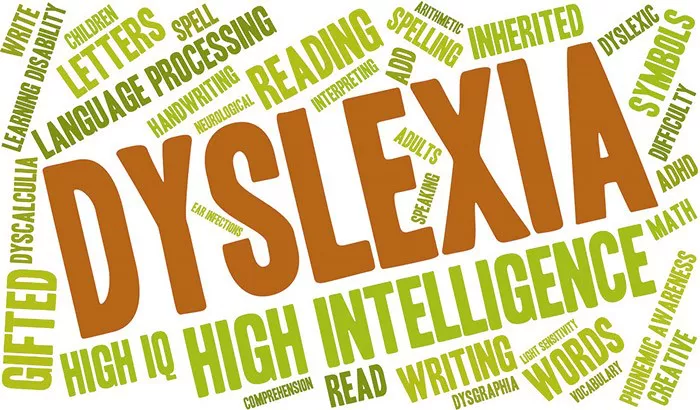Autism Spectrum Disorder (ASD) is a complex developmental disorder that affects social interaction, communication skills, and behavior. It typically appears in early childhood and persists throughout a person’s life. Individuals with autism may have difficulty understanding social cues, expressing themselves verbally and non-verbally, and engaging in repetitive behaviors or restricted interests.
On the other hand, dyslexia is a specific learning disability that primarily affects reading ability, spelling, and decoding skills. Dyslexia is not related to intelligence but rather to the way the brain processes written and sometimes spoken language. It may not be diagnosed until a child is in school and begins to learn to read.
Symptoms:
Autism manifests in various ways, making it a spectrum disorder. Some common symptoms include challenges with social interactions, difficulty understanding and using non-verbal cues such as facial expressions and gestures, repetitive behaviors like hand-flapping or rocking, and intense interests in specific topics.
In contrast, dyslexia is characterized by difficulties with phonetic decoding, slow reading fluency, spelling challenges, and comprehension problems. Individuals with dyslexia may also experience difficulties with writing, organization, and time management.
Age of Diagnosis:
Autism is typically diagnosed in early childhood, often by the age of two or three, although some individuals may not receive a diagnosis until later in childhood or even adulthood. Diagnosis is based on a thorough evaluation of the individual’s behavior, communication skills, and developmental history.
Dyslexia may not be identified until a child begins formal education and shows difficulty with reading and related skills. Diagnosis often occurs between the ages of seven and twelve when reading demands increase and reading difficulties become more apparent.
Severity:
Both autism and dyslexia can vary widely in severity. Autism can range from mild to severe, with some individuals requiring significant support in daily functioning, while others may have higher levels of independence. Similarly, dyslexia severity can vary, with some individuals experiencing mild reading difficulties and others struggling significantly with reading and related skills.
Brain Basis:
Both autism and dyslexia are neurodevelopmental disorders that affect the structure and function of the brain. Research using neuroimaging techniques has identified differences in brain structure and function in individuals with these disorders compared to typically developing individuals.
While the exact causes of autism and dyslexia are not fully understood, there is evidence to suggest that both disorders have a genetic component. Studies have identified specific genes that may be associated with an increased risk of developing autism or dyslexia, although the interplay between genetic and environmental factors is complex.
Overlap and Coexistence:
While autism and dyslexia are distinct disorders, they can coexist in the same individual. Research suggests that there may be an increased prevalence of dyslexia in individuals with autism and vice versa. However, having one condition does not guarantee the other, and many individuals with autism do not have dyslexia, and vice versa.
Some symptoms of autism and dyslexia overlap, particularly in the area of communication. Both disorders can involve difficulties with expressive and receptive language skills, including delayed speech and difficulty understanding spoken language. However, the underlying causes of these communication difficulties may differ between autism and dyslexia.
Treatment:
Treatment for autism typically involves a combination of behavioral interventions, speech therapy, occupational therapy, and educational support. The focus is on improving social skills, communication skills, and behavior management to help individuals with autism function more effectively in daily life.
For dyslexia, interventions focus on improving reading skills through specialized reading programs and educational support. These interventions may include phonics instruction, multisensory learning techniques, and strategies to improve reading fluency and comprehension. Early intervention is key to improving outcomes for individuals with dyslexia, as it can help prevent academic difficulties and improve overall educational achievement.
Conclusion:
While autism and dyslexia share some symptoms, they are distinct neurodevelopmental disorders with unique characteristics and challenges. Autism primarily affects social interaction, communication, and behavior, while dyslexia primarily affects reading ability and related skills.
Understanding the differences between autism and dyslexia is important for accurate diagnosis and appropriate intervention. By recognizing the unique needs of individuals with these disorders, we can provide more effective support and improve outcomes for individuals affected by autism and dyslexia.


